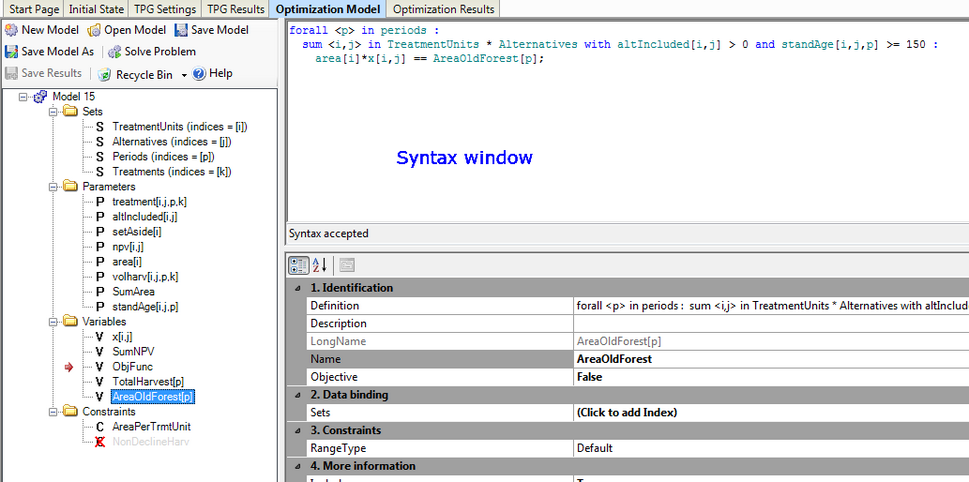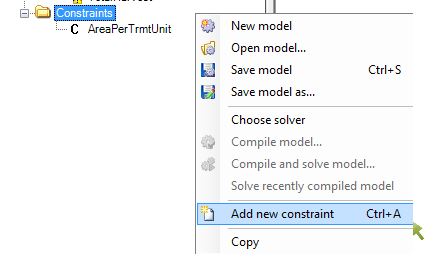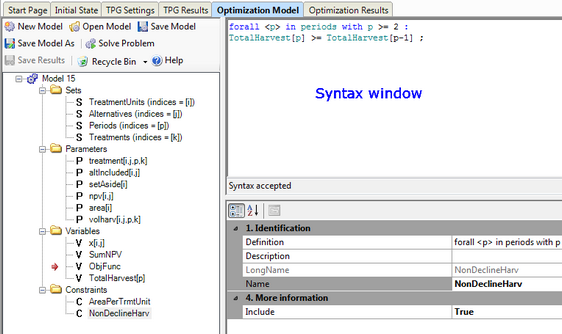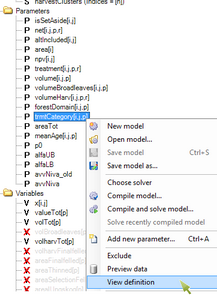Optimization: Examples
Here are some examples of how account variables are created and how restrictions can control production and outcome for different goods.
![]() Account variable: Area of old forest
Account variable: Area of old forest
Here you create an account variable for this:
|
Scenario: You want to add a requirement that at least 10 % of the area must consist of 100-year or older forest in each time period.
Prerequisites:
|
Scenario: You want to analyse the implications of applying selective cutting on at least 10 % of the area and let the optimisation model decide which stands are suitable for this management. Prerequisites You have run TPG where both selective and clear cut forestry alternatives have been simulated for 30 % of the stands. See steps 1-7 under Selective cutting/Continuous cover forestry (PlanWise).
sum <i,j> in TreatmentUnits*Alternatives with altIncluded[i,j] == 1 and trmtCategory[i,j,0] == 2 : area[i]*x[i,j] == AreaCCF ;
Note! From version 2.5 there is a new result variable called ManagementSystem (in result group Treatment) that you can use instead, which would give the formulation below (if the management system for a stand is not allowed to change over time). sum <i,j> in TreatmentUnits*Alternatives with altIncluded[i,j] == 1 and mgmtSystem[i,j,0,0] == 1 : area[i]*x[i,j] == AreaCCF ;
Note: We assume that a control category “Selective cutting” has running number 2. The actual number can be found by right-clicking the parameter trmtCategory[i j t] in the model tree. Select Show definition and select the valid TPG-simulation. The number corresponding to the category will then be shown.
AreaCCF >= 0.1 * SumArea; Where SumArea is a formal parameter that sums the total area (see the example of SumArea), and we assume that at most 10 % of this will be managed with continuous cover forestry. |





